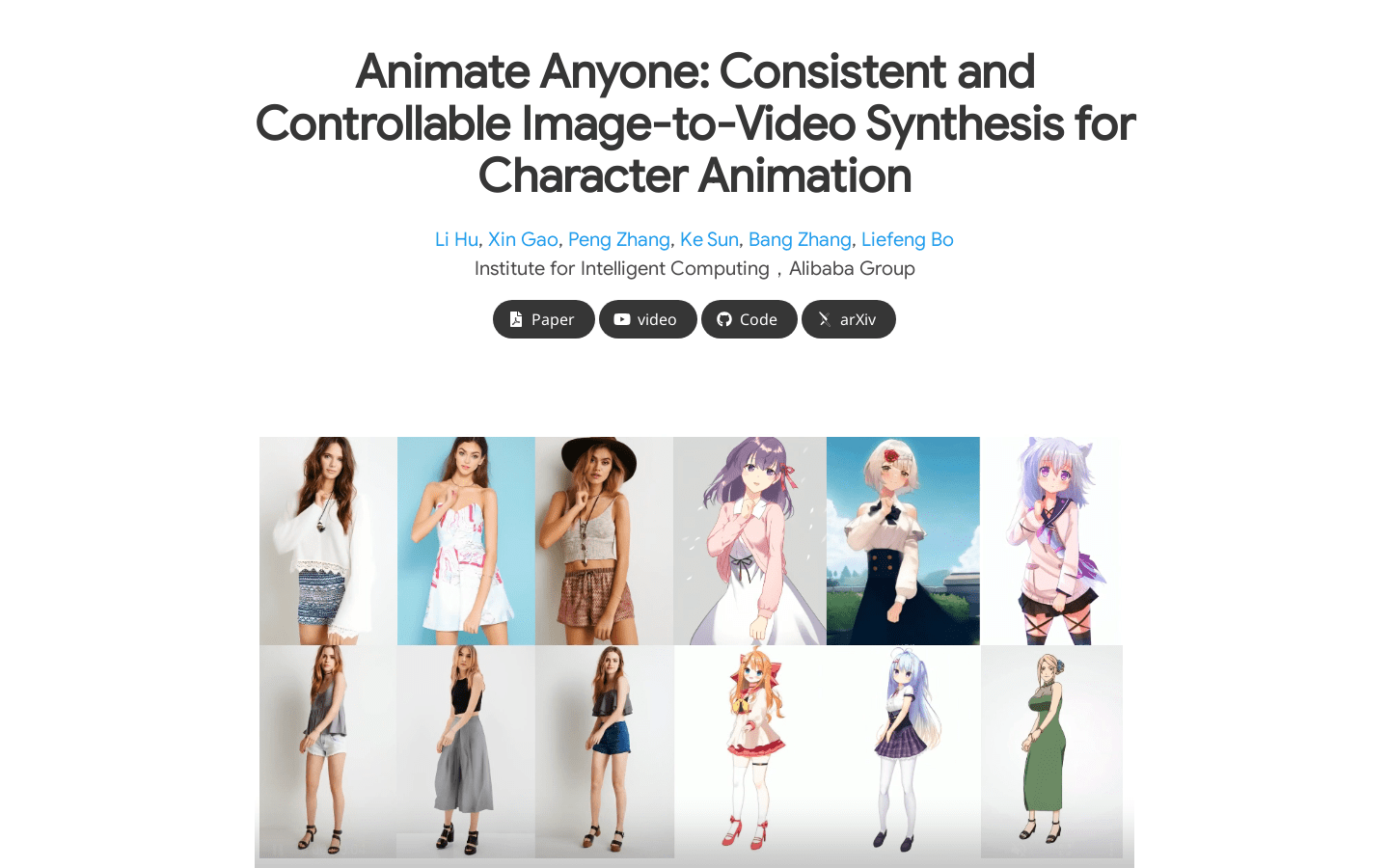

Animate Anyone
Overview :
Animate Anyone aims to generate character videos from static images driven by signals. Leveraging the power of diffusion models, we propose a novel framework tailored for character animation. To maintain consistency of complex appearance features present in the reference image, we design ReferenceNet to merge detailed features via spatial attention. To ensure controllability and continuity, we introduce an efficient pose guidance module to direct character movements and adopt an effective temporal modeling approach to ensure smooth cross-frame transitions between video frames. By extending the training data, our method can animate any character, achieving superior results in character animation compared to other image-to-video approaches. Moreover, we evaluate our method on benchmarks for fashion video and human dance synthesis, achieving state-of-the-art results.
Target Users :
Transforms static images into character videos, particularly suitable for fashion video synthesis and human dance generation.
Use Cases
Use Animate Anyone to transform fashion photos into realistic animated videos
Use Animate Anyone for human dance generation on the TikTok dataset
Use Animate Anyone to animate anime/cartoon characters
Features
Generates character videos from static images driven by signals
Leverages the power of diffusion models
Designs ReferenceNet to merge detailed features via spatial attention
Introduces an efficient pose guidance module to direct character movements
Adopts an effective temporal modeling approach to ensure smooth cross-frame transitions between video frames
Extends training data to allow animation of any character
Achieves state-of-the-art results on benchmarks for fashion video and human dance synthesis
Featured AI Tools

Sora
AI video generation
17.0M

Animate Anyone
Animate Anyone aims to generate character videos from static images driven by signals. Leveraging the power of diffusion models, we propose a novel framework tailored for character animation. To maintain consistency of complex appearance features present in the reference image, we design ReferenceNet to merge detailed features via spatial attention. To ensure controllability and continuity, we introduce an efficient pose guidance module to direct character movements and adopt an effective temporal modeling approach to ensure smooth cross-frame transitions between video frames. By extending the training data, our method can animate any character, achieving superior results in character animation compared to other image-to-video approaches. Moreover, we evaluate our method on benchmarks for fashion video and human dance synthesis, achieving state-of-the-art results.
AI video generation
11.4M














